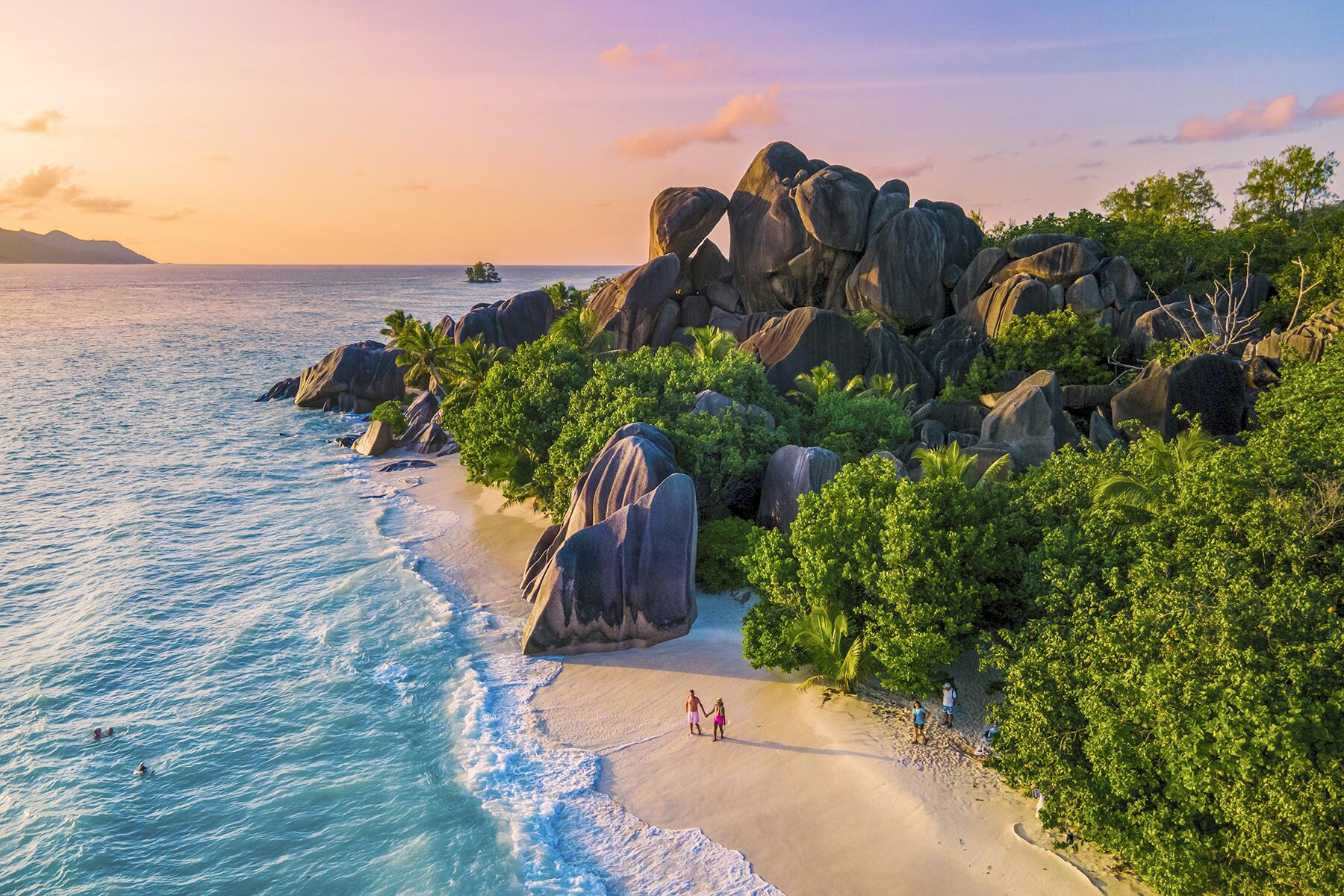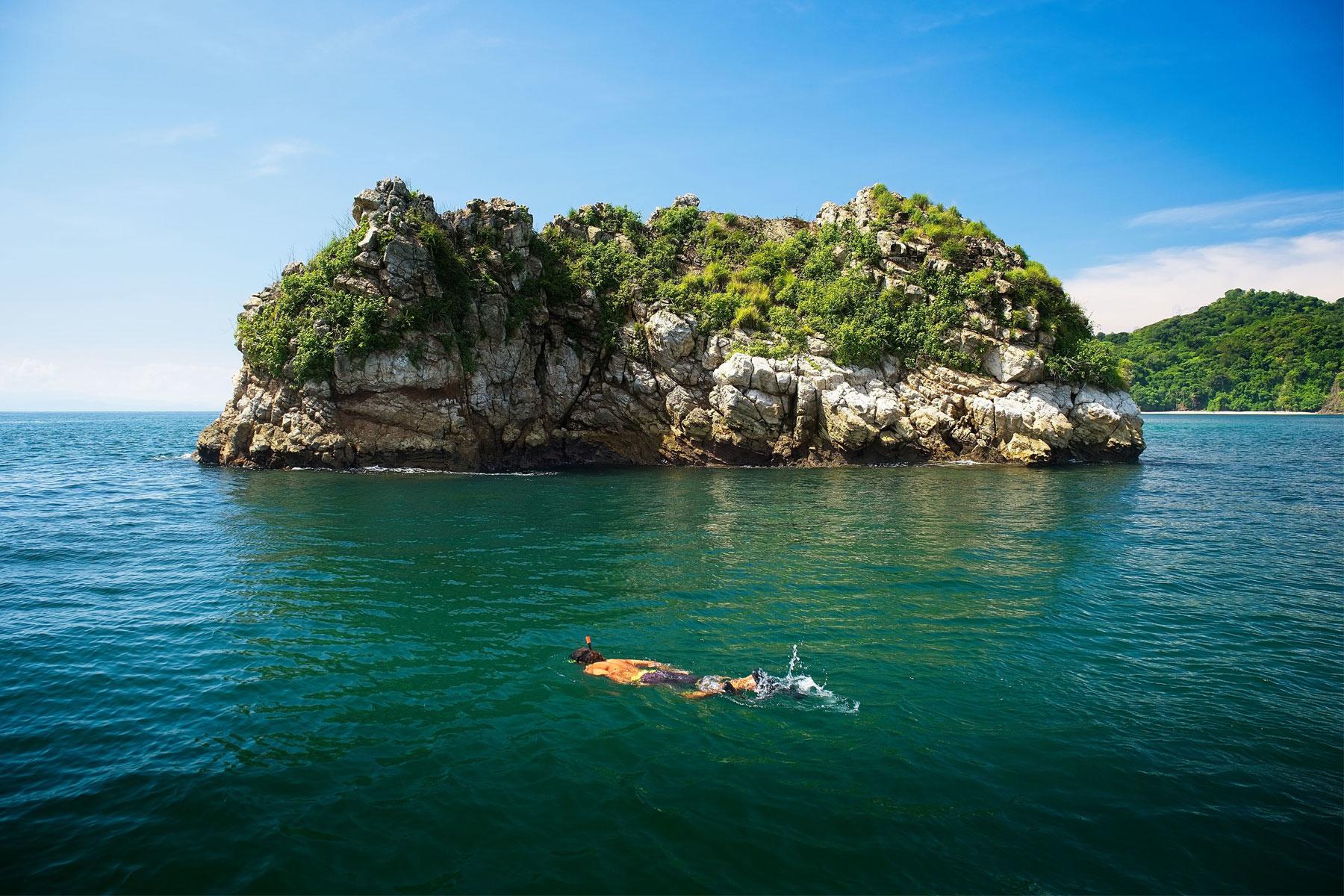From when to go to where to stay and how to avoid potential hazards, we've got all your travel questions about what you should and ESPECIALLY shouldn't do while you are traveling to Costa Rica.
Costa Rica is one of Central America’s most popular destinations—and for good reason. With so much to see and do in this spectacular country, it’s important to make the most of your trip. To help guide you to make the best decisions, we give you a baker’s dozen suggestions of things not to do in Costa Rica to ensure a great vacation. And if you are looking for places to stay, we’ve got you covered with hotels.
Don’t Fear the Rainy Season
Costa Rica’s May–November wet season doesn’t have to deter you from travel here. For much of that time, you’ll have rain for a couple of hours in the afternoon, and you can plan your activities around that schedule. Rains become heavier and more prolonged in September and October, and if you fancy a beach vacation during those two months, it could be a washout. Nature excursions go on rain or shine, though, and some outfitters provide ponchos and boots. A few of the big eco-lodges provide umbrellas for use on their grounds, but you can’t go wrong packing a collapsible one. The bonus of rainy-season travel is the lush green landscape and lower prices, and in a stroke of marketing genius, the tourism industry here bills the wet months as the “Green Season.” As a side note, Costa Ricans call the rainy season invierno (winter) and use the term verano (summer) to refer to the dry season, technically the opposite of what they should be in the Northern Hemisphere.
Related: Costa Rica Travel Guide
Don’t Necessarily Fly Into San José
San José’s Juan Santamaría Airport (SJO) sits smack-dab in the middle of the country and makes a convenient, centrally located arrival and departure point for most visitors. But if you’re spending all your time in northern Costa Rica, say, lazing on a north Pacific beach with a trip to the Arenal volcano, you have a second option: Daniel Oduber Airport (LIR) lies just outside the small northwestern city of Liberia and receives flights from all the major airlines too. Fares do skew slightly higher to Liberia, but you’ll save a lot of overland hours to and from San José. Both airports are capricious places—upon departure, you might breeze through check-in and security in 15 minutes, or you may encounter lines stretching out the door. Whether or not you abide by the recommended three-hour advance check-in depends on your aversion to risk.
Recommended Fodor’s Video
Don’t Ignore Your Passport’s Remaining Validity
We’ve never received a consistent response to the question: “How long must my passport be valid to travel to Costa Rica?” The official answer is “for the duration of your stay in the country.” We’ve heard reports, however, of airlines refusing boarding to anyone with less than 30 days, 90 days, or six months remaining before their passports expire. We recommend you err on the side of caution. Before you travel to Costa Rica, renew your passport if you’re getting down to the six-month mark. (That’s the requirement for entry to many countries anyway.)
Related: Costa Rica Top Attractions
Don’t Assume All Food South of the Border Is the Same
Costa Ricans do not eat tacos and enchiladas. Well, they do eat them, but only when they’re dining out at a Mexican restaurant. At its most basic, Costa Rican cuisine is hearty, inexpensive, filling, and not spicy. You’ll certainly get your share of chicken and pork and rice and beans. Indeed, you’ll swear that gallo pinto (literally “spotted rooster”), the country’s signature dish, is following you everywhere. Give this mix of rice, black beans, and finely chopped vegetables a try, and dress it up, Costa Rican style, with tortillas and sour cream. Some chefs here are doing amazing things with local and international cuisine, especially in locales with large foreign populations, such as San José, the Pacific coast’s Manuel Antonio and Tamarindo, and Puerto Viejo de Talamanca on the Caribbean side.
Don’t Be Afraid to Speak Spanish
Most folks associated with the tourism industry here speak English—good English at that—so never fear if your Spanish is nonexistent. But don’t be afraid to dust off and pull out whatever Spanish you might know. Greet people with a hearty “Buenos días” (good morning), “Buenas tardes” (good afternoon) and “Buenas noches” (good evening). Sprinkle your requests with those “Por favor” (please) and “Gracias” (thank you) niceties. You’ll elicit a smile. Plus, you have to love a people whose “You’re welcome” response is not the standard “De nada” (it’s nothing) heard in other Spanish-speaking countries, but rather, “Con mucho gusto” (with much pleasure).
Don’t Try to See the Entire Country in One Trip
It should be easy to see all of Costa Rica in two weeks—the country is only the size of Vermont and New Hampshire combined, after all—but what’s that they say about the best-laid plans? Once you arrive, you’ll see how mountainous the center of the country is, and that the highway system leaves something to be desired. It takes a lot longer to get from place to place than you realize. Map out a couple of locales for a week or three or four stops in two weeks and get to know them well. You’ll appreciate that slower pace. And if you’re like many visitors, during your flight home, you’ll start planning ways you can get back to Costa Rica. What you didn’t see on your first trip, you’ll catch the next time around.
Related: White-Water Thrills: Rafting and Kayaking in Costa Rica
Don’t Rely on Addresses
Looking for standard street addresses? If they exist, folks here generally don’t know them or use them. Costa Rica relies instead on a charming, exasperating system of describing places in reference to landmarks, where “100 meters” denotes the distance to the next cross street, regardless of the actual measurement. “200 metros al norte y 50 metros al oeste de la iglesia” means your destination is two blocks north and a half-block west of the church. Modern Costa Rica uses anything—a gas station, a McDonald’s, a mango tree—as a reference point. As you can imagine, getting a pizza delivered here is a challenge. There is a bright side: Costa Ricans are amazingly helpful. Keep asking. You’ll get where you’re going eventually.
Don’t Feel Obligated to Go on a Canopy Tour
Costa Rica gave the world the zip-line canopy tour, which whisks you through the treetops courtesy of a cable, helmet, and a secure harness. They’re great fun and have become the country’s signature tourist activity. Gauge your willingness and ability carefully before you set out, however. Remember: there’s no turning back once you start. There are other, more sedate ways to see the rainforest canopy, anyway. A few aerial trams (you’re seated in a slow-moving gondola car) and hanging bridges (you walk) offer a better opportunity to take in the treetop nature spectacle than you get with the high-energy zip-line tours.
Don’t Swim Alone
We’ve heard this advice all our lives, and it was never more apt than it is in Costa Rica. You don’t need to venture out far to feel the wicked riptides that plague many of the hundreds of beaches here. (Conversely, these are exactly the conditions that make Costa Rica so popular with surfers.) On top of that, lifeguards patrol few beaches and you’ll see few warning signs. Take utmost care in the water.
Don’t Go During Christmas or Semana Santa
December 20-ish through the end of the year, and Holy Week, the week before Easter, are the country’s monster tourism times. Prices go up and availability goes down dramatically during those weeks. Not only do foreigners flock here, but you’re competing for space with Costa Ricans. They have the time off, too. (Traffic-snarled San José becomes a virtual ghost town during Holy Week, called Semana Santa in Spanish.) Make hotel and car-rental reservations weeks—better yet, months—in advance if you plan to be here during those periods. And be prepared for one arcane oddity of Costa Rican law if you’re here during Holy Week: Holy Thursday and Good Friday are legally dry days in many communities, and no alcoholic beverages may be served or sold.
Don’t Smoke in Public
Costa Rica is smoke-free, with lighting up prohibited in all public buildings. That takes in all businesses, so the law governs bars and restaurants too. The smoking ban also includes your hotel room and all public areas, indoors and outdoors, of all lodgings. You’ll see the red, white, and black PROHIBIDO FUMAR signs everywhere. Compliance is good; fines are steep for both the errant smoker and the business.
Don’t Ignore Traffic Laws
How shall we put this? Those wonderful “con mucho gusto” Costa Ricans have a reputation for being some of the world’s most impatient and least compliant drivers. But don’t take that as license for you to do the same. Traffic fines are steep—a speeding ticket could set you back hundreds of dollars—and some evidence exists that the transit police target foreign drivers. Buckle up. Obey speed limits religiously. Don’t phone or text while driving. Don’t drink and drive. Place the kids in the back seat. And just because you don’t see the traffic cops doesn’t mean they aren’t there. Mounted cameras patrol the highways too.
Don’t Take the Expat Plunge too Soon
An estimated 30,000 Americans have retired in Costa Rica, with another 50 nationalities represented among the expatriate population. Stop and take a deep breath if you hear yourself uttering the words: “Honey, that nice real estate agent we met in the hotel lobby told us how easy it would be to move down here. Let’s do it.” As happens to countless other visitors, the sunshine syndrome has snuck up on you. Before you sell the farm and make the move here, the experts suggest doing a trial rental of a few months to see if day-to-day life in Costa Rica is for you. Living here—with all the mundane, attendant tasks of grocery shopping, banking, and making doctor’s appointments—is much different than being on vacation.




